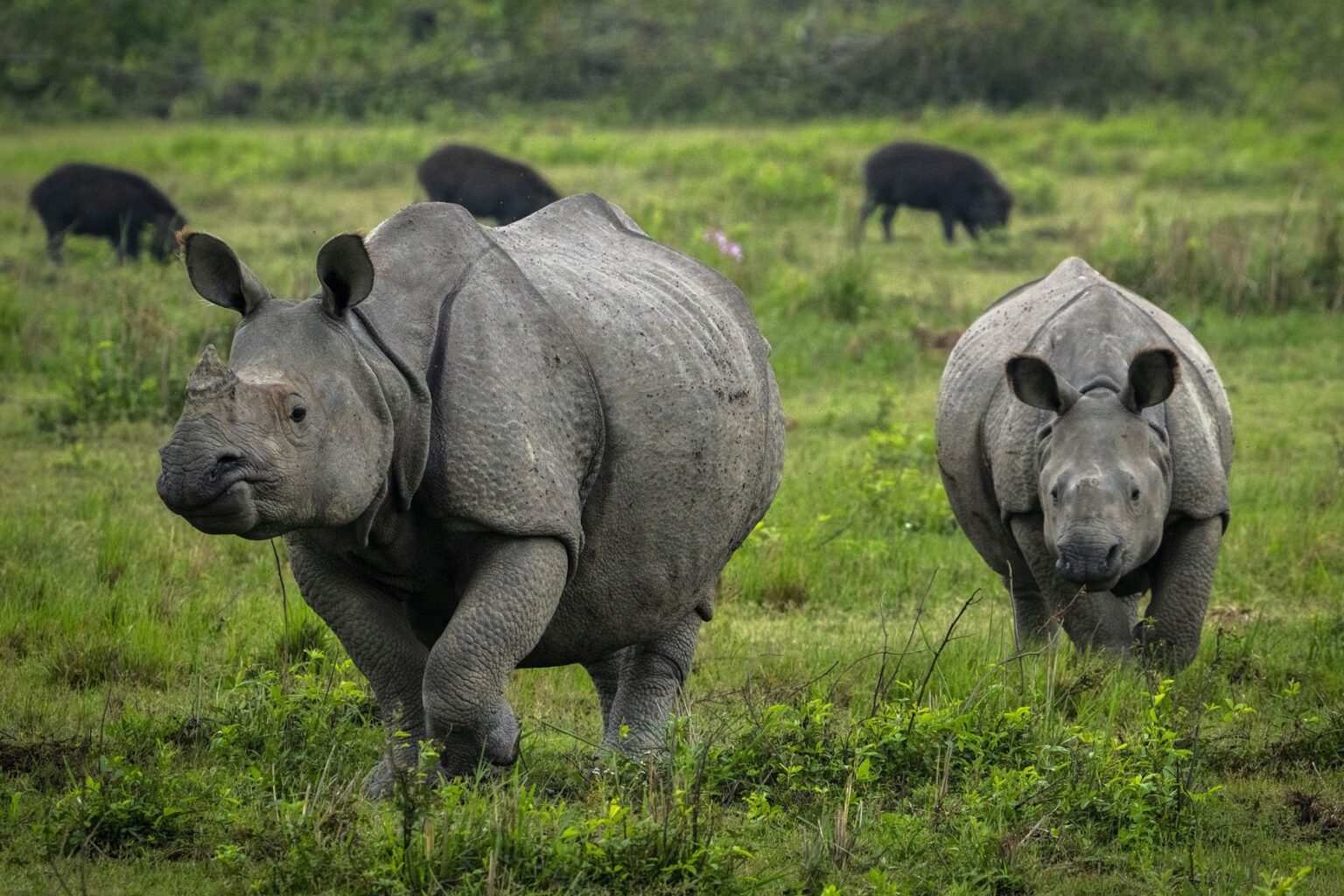The Indian Rhinoceros also known as the Greater One-Horned Rhinoceros is a majestic creature that roams the forest of Nepal and Northern and Eastern India in the Grasslands and the surrounding woodlands. Its distinctive single horn with armor hide and gentle demeanor have made it an icon for India’s rich biodiversity and Heritage. This gentle giant has been persecuted relentlessly for its horns which have no benefits to the Human body as claimed and marketed, despite the persecution faced by the local communities who in lure of money would try to poach Rhino it has survived and thrived in Northeast India in Assam’s Kaziranga National park which has become a symbol of strength and resilience.
By Mayank1704 – Own work, CC BY-SA 4.0,
In the 1970’s the population of Indian Rhinoceros plummeted to a mere 600 individuals due to the rampant poaching for its prized horns and habitat loss which resulted in Human-Wildlife conflict, with the intervention of the Indian Government and the launch of Project Rhino in 2005 their population has rebounded and are in good numbers with near zero poaching cases annually.
In 2005 with the project Rhino, the Indian Rhino Vision 2020 (IRV) was launched setting an ambitious target of 3000 Rhinos in 2020, with the collective efforts of the government and the local communities with the help of many conservation NGOs Project Rhino achieved the target with currently more than 3,500 individuals in India.
Conservation Strategies
Conservation requires a multi-faceted approach to the problem, the IRV 2020 employed a host of conservation measures such as:
Intensive Anti-poaching patrols and efforts- anti-poaching patrols were ramped up in the protected areas, new surveillance methods and equipment were deployed and used, and infrastructure for the rangers in the protected areas was improved.
Habitat protection and restoration- protected areas were expanded, existing degraded habitats were restored and Human encroachment was removed, this removal, however, was controversial as the local tribal communities were removed from their land once their land became designated as a National Park area, and hence many humans rights and clout-chasers, pseudo- environmentalists raised the question against WWF funding radical wildlife conservation initiatives to protect the Indian Rhinoceros, many were of the view that de-encroachment of the land was a wrong move as the people have settled there since many decades but they fail to point out that the government has provided them alternative housing options and jobs to sustain themselves and not rely on the forests anymore.
Community Engagement and education- fostering a sense of stewardship and a sense of belonging in the local communities sharing the habitat with the Rhino makes them feel that they have a stake in conserving the Rhino and hence would be more inclined to protect the Rhinos rather than kill it for a meager payout.
Translocation and population management- The Translocation of Rhinos to improve the Genetic diversity and problematic Rhinos was carried out.
The current population of Indian Rhinoceros stands as a testament to the dedicated and unwavering efforts and commitments by the government and conservationists alike to save the one-horned Rhino from imminent extinction due to a senseless trade.
The successful conservation of the Indian One-horned Rhinoceros can be attributed to several factors such as strong political will, effective collaborations, deployment of innovative strategies, and most importantly the involvement of local communities in conservation. Despite the initial success we have achieved the work is not done yet, we still need to keep up anti-poaching patrols, conduct extensive research and monitoring, expand protected areas, and continue to involve the local communities in the conservation of the Greater One Horned Rhinoceros as the future of the Indian Rhinoceros lies in the above few factors mentioned.
